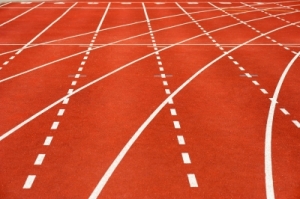 Of all the spectacles in the ancient world, the Olympic Games were among the greatest. It was there that athletes became immortalized in sports history. We almost never know the names of anyone other than the winners of the events–winning was everything, and second place was merely the first loser.
Of all the spectacles in the ancient world, the Olympic Games were among the greatest. It was there that athletes became immortalized in sports history. We almost never know the names of anyone other than the winners of the events–winning was everything, and second place was merely the first loser.
It is said the Greeks considered it a misfortune to die without ever having visited Olympia. As great as the Olympic Games are, we might not be so quick to agree when we understand the conditions in which they took place. We have the luxury of watching the Games on television in air-conditioned homes. The ancients had to travel as long as two weeks, braving personal dangers, blistering heat, and difficult terrain. When they got to Olympia, there was little water, no showers, no public sanitation, and no deodorant. Any of us might shudder to think of being trapped in a filthy ocean of unwashed humanity. Yet it did not matter to the ancients. Nothing could detract from the glory of the Games.
When we think of the worlds greatest Olympians, Michael Phelps may come to mind. He has 21 gold medals currently, and will almost certainly add to his total this year. We might also think of Simone Biles, who is already being called one of the greatest gymnasts ever. At a diminutive 4’8″, the 19-year old has dominated international competition and looks to do the same on the Olympic stage. Her future looks bright. It’s already golden.
We live in an age where Olympians are still some of the greatest heroes in the world of sports. It was no different in ancient times, where Olympic champions could live a life of ease if they were successful. In light of this year’s Olympics, I’d like to do a quick comparison between ancient and modern athletes.
- Michael Phelps’ diet consists of something like 10,000 calories a day. One ancient Olympian could beat him, however. It is said that the 6th century BC wrestler Milo of Croton consumed 20 lbs. of meat, 20 lbs. of bread, and 3 pitchers (roughly 8 quarts) of wine every day. He supposedly carried a four-year-old bull on his shoulders into the stadium at Olympia, where he proceeded to slaughter it and consume the entire carcass in a single day. I don’t know how many calories are in a 2,000-pound animal, but I bet it’s a lot.
- Russian Aleksandr Karelin is widely considered the best Greco-Roman wrestler of the 20th century. He is known for the “Karelin Lift,” a maneuver in which he would pick up his opponents and slam them down on the mat. But our friend Milo of Croton could probably best him. Legend has it that Milo was so strong that he could grip a pomegranate without crushing it while others unsuccessfully tried to pry it from his grasp. Once he broke a belt tied around his head simply by taking a deep breath and making the veins in his temples bulge.
- Cuban Felix Savon is considered one of the greatest boxers in modern Olympic history. With a record three gold medals (tied with two others) and a dazzling six world championships as an amateur, his greatness is impossible to dispute. Yet Theagenes of Thasos supposedly won 1,300 fights at the Olympics and claimed 21 championships. He was never defeated. According to an ancient legend recorded by the Greek author Pausanias, someone who had a grudge against Theagenes attempted to vandalize his statute. The statue fell on the man, killing him. You know you’re for real when your statue can kill someone.
The examples that I’ve cited are of real athletes, but their stories come from ancient legends (and, therefore, are mostly untrue). But it’s fun to explore the mythology of the ancient Olympic Games. If you would like to get a taste of what the ancient Olympics were like, please check out this week’s podcast at The Light Network or on iTunes.
Image courtesy of stockimages / FreeDigitalPhotos.net


Great article!
LikeLike